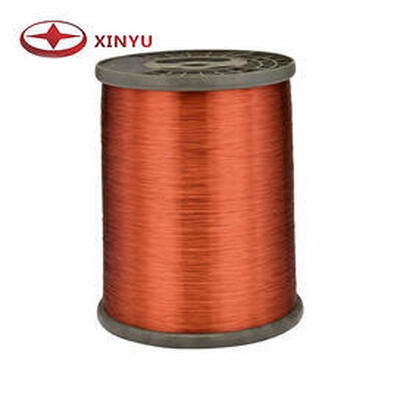Popularity of Aluminum Winding Wire Is Introduced
Body
During the 1970’s, aluminum winding wire became quite popular and was extensively used. Since that time, aluminum wiring has been implicated in a number of house fires, and most jurisdictJions no longer permit it in new installations.
We recommend, even if you’re allowed to, that do not use it for new wiring.
Don’t panic if your house has aluminum wiring. Aluminum wiring, when properly installed, can be just as safe as copper.
Aluminum wiring is, however, very unforgiving of improper installation. We will cover a bit of the theory behind potential problems, and what you can do to make your wiring safe.
The main problem with aluminum wiring is a phenomenon known as “cold creep”. When aluminum wiring warms up, it expands. When it cools down, it contracts. Unlike copper, when aluminum goes through a number of warm/cool cycles it loses a bit of tightness each time. To make the problem worse, aluminum oxidizes, or corrodes when in contact with certain types of metal, so the resistance of the connection goes up. Which causes it to heat up and corrode/ oxidize still more? Eventually the wire may start getting very hot, melt the insulation or fixture it’s attached to, and possibly even cause a fire.
Since people usually encounter aluminum wiring when they move into a house built during the 70’s, we will cover basic points of safe aluminum wiring.
If your home has aluminum wiring, you should hire a licensed electrical contractor to check the following things:
1) Fixtures (e.g.: outlets and switches) directly attached to aluminum wiring should be rated for it. The device will be stamped with “Al/Cu” or “CO/ALR”. The latter supersedes the former, but both are safe. These fixtures are somewhat more expensive than the ordinary ones.
2) Wires should be properly connected (at least 3/4 way around the screw in a clockwise direction). Connections should be tight. While repeated tightening of the screws can make the problem worse, during the inspection it would pay off to snug up each connection. Note that aluminum wiring is still often used for the main service entrance cable, it should be inspected.
3) “push-in” terminals are an extreme hazard with aluminum wire. Any connections using push-in terminals should be redone with the proper screw connections immediately.
4) There should be no signs of overheating: darkened connections, melted insulation, or “baked” fixtures. Any such damage should be repaired immediately.
5) Connections between aluminum and copper wire need to be handled specially. Current Canadian codes require that the connectors used must be specially marked for connecting aluminum to copper. The NEC requires that the wire be connected together using special crimp devices, with an anti-oxidant grease. The tools and materials for the latter are quite expensive – not practical to do it yourself unless you can rent the tool.
[Note that regulations are changing rapidly in this area. Suggest that you discuss any work with an inspector if you’re going to do more than one or two connections.]
6) Any non-rated receptacle can be connected to aluminum wiring by means of a short copper “pigtail”. See (5) above.
7) Shows reasonable workmanship: neat wiring properly stripped (not nicked) wire etc.
If, when considering purchasing a home, an inspection of the wiring shows no problems or only one or two, we believe that you can consider the wiring safe. If there are signs of problems in many places, we suggest you look elsewhere. If the wrong receptacles are used, you can replace them with the proper type, or use pigtails – it is best to have this done by a professional.
How about considering buying aluminum magnet wire?









Comments